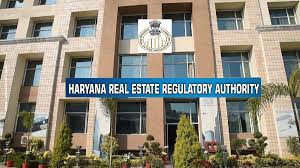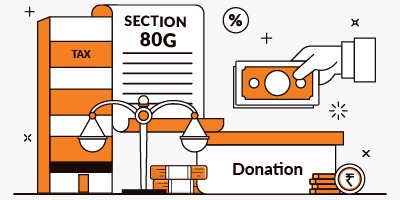@JUDGMENTTAG-ORDER
C.Y. Somayajulu, J.@mdashRevision petitioner filed O.S.No.1838 of 2000 on the file of the Court of the Principal Junior Civil Judge, Warangal, seeking an injunction restraining the respondents from interfering with his possession over the properties specified in the schedule appended to the plaint, and filed I.A.No.3084 of 2000 therein under Order 39 Rules 1 and 2 C.P.C. seeking injunction during the pendency of the suit. Since the respondents filed a Caveat, notice of the petition I.A.No.3084 of 2000 was served on the counsel for the respondents. The case of the petitioner is that he purchased the suit property under two agreements of sale dated 3-11-1971 and 1-11-1971 from the father of the respondents and their paternal uncle and was put in possession of the property and that the respondents are trying to interfere with his possession without any right. The respondents disputed the agreements relied on by the revision petitioner. The revision petitioner filed an additional affidavit alleging that on the intervening night of 27 and 28-12-2000 respondents trespassed into the suit property and erected a shed to make it appear that they have been in possession of the suit property though they in fact are not.
2. In support of the case of the revision petitioner Exs.P1 to P9 were marked and in support of the case of the respondents, Exs. R1 to R17 were marked. It is not out of place for me to mention that the learned Junior Civil Judge was in error in marking the documents filed by the revision petitioner as Exs.P1 to P9 and documents produced by the respondents as Exs.R1 to R17. He ought to have marked them as Exs. A1 to A9 and B1 to B17 as contemplated by Rules 51 and 115 of the Civil Rules of Practice and Circular Orders 1990. The learned Junior Civil Judge, on the basis that the revision petitioner himself admitted that the respondents trespassed into the suit property and on the basis that some of the documents being relied on by the revision petitioner which require registration are not registered, dismissed the petition. On appeal by the revision petitioner in C.M.A.No.48 of 2001, the learned II Additional District Judge, Warangal while confirming the order of the Junior Civil Judge dismissed the appeal. Hence this revision.
3. The main contention of the learned counsel for the revision petitioner is that the Courts below erred in not taking into consideration Exs.P1 and P2 on the ground that they unregistered sale deeds without keeping in view the provisions of Section 49 of the Registration Act, which contemplates the Courts looking into unregistered documents for collateral purpose of possession, and contended that since the petition has to be decided on the question of possession as on the date of the suit, and since the documentary evidence adduced by the revision petitioner clinchingly establishes possession of the revision petitioner over the suit property on the date of suit, he is entitled to injunction in his favour. The contention of the learned counsel for the respondents is that since Exs.P1 and P2 are mere agreements of sale, the suit filed for injunction simplicitor without seeking the relief of specific performance of those agreements is not maintainable as held in
4. It is not necessary for me, for deciding this revision, to go into the question as to whether Exs.P1 and P2 are agreements of sale or sale deeds. If they are construed as agreements of sale, they do not require registration, and if they are construed as sale deeds, they do require registration in view of Section 17 of Registration Act. No doubt as per the provisions of Section 49 of the Registration Act, an unregistered document can be taken into consideration for a collateral purpose. But, for deciding this appeal the applicability of Section 49 of Registration Act need not be considered.
5. The suit in this case was filed on 27-12-2000. According to the revision petitioner, respondents trespassed into the suit property during the intervening night of 27 and 28-12-2000. It is well known that the sine qua non for granting a prohibitory injunction protecting the possession of the petitioner over a disputed property is his (petitioner) establishing his possession thereon. If he is not in possession of the disputed property, question of granting an injunction protecting his possession does not arise. Therefore, if the respondents trespassed into the suit property, petitioner has to have file a petition seeking a relief of recovery of possession of the suit property from the respondents on the ground that they, with a view to frustrate his petition for injunction, thought it fit to trespass into the suit property. On such petition the Court, after making such enquiry as it deems fit, would give a decision as to who was in possession of the suit property by the date of filing of the suit, and direct the respondents to deliver possession of the suit property to the petitioner, if it comes to a conclusion that the respondents trespassed into the suit property after filing of the suit, or would dismiss the petition if it comes to a conclusion that respondents themselves were in possession of the suit property by the date of filing of the suit. Without filing a petition for recovery of possession of the suit property, petitioner who admittedly lost his possession after filing of the suit, cannot continue to prosecute the petition for injunction against the respondents, restraining them from interfering with his possession over the suit property.
6. It is no doubt true that proceedings have to be decided as per the facts existing on the date of filing of the suit, but it should not be forgotten that the Court also is bound to take notice of the subsequent events, and if the subsequent events that took place disentitle the plaintiff from granting the relief claimed, he cannot be granted the relief. Therefore, the remedy of the petitioner is to file a separate petition seeking recovery of possession and depending on the result of that petition only he can seek the prayer sought in this petition.
7. The other contentions of the learned counsel for the revision petitioner is that the Courts below failed to take into consideration the report of the Commissioner appointed to note the physical features and also the third party affidavit filed by the petitioner in support of his contention. I have gone through the report of the learned Commissioner appointed to make a local inspection and to note the physical features obtaining on the suit property. In my opinion the report of the Commissioner is of little help in finding out as to whether the structures in existence therein are new or old because towards the end of para 5 of his report Commissioner observed as follows:
"Since some of the physical features on the shed are seeming to be new and some of the physical features are seeming to be old, I am unable to find out whether the shed is old one or new one".
Therefore, the Courts below not taking into consideration the report of the Commissioner is not a ground in favour of the revision.
8. Third party affidavit filed by the revision petitioner also is of little help to him in view of the additional affidavit filed by him admitting that the respondents have trespassed into the suit property during the intervening night of 27 and 28-12-2000.
9. For the above reasons I find no merits in this revision petition and hence the petition is dismissed. It is made clear that petitioner is at liberty to take such steps as he deems fit before the trial Court for recovery of possession of the suit property. No costs. The trial Court shall dispose of the suit as expeditiously as possible, at any rate before the end of February, 2003.

